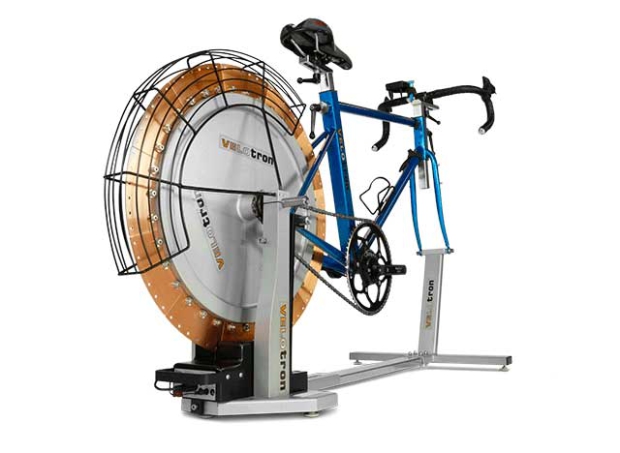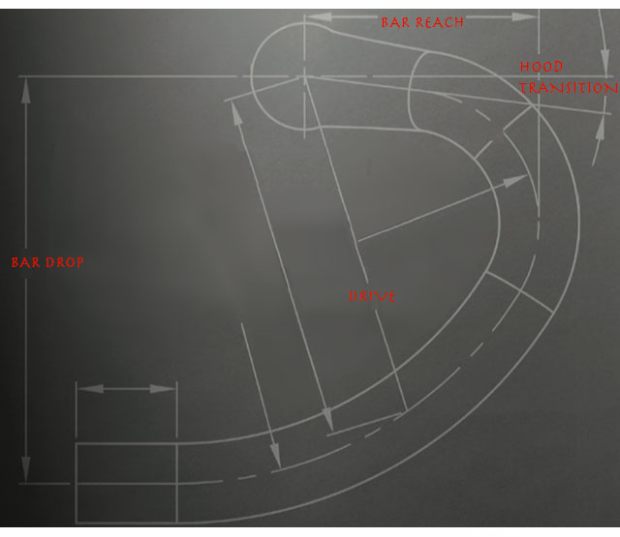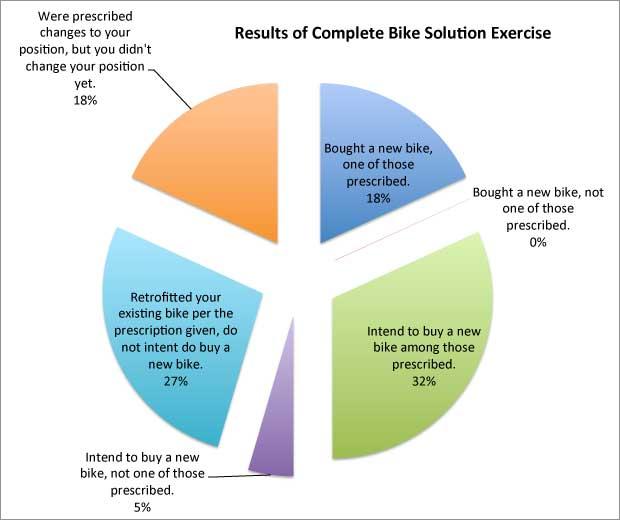Wahoo Kickr Bike: On the Leading Edge of a Hot New Category
The Kickr Bike might be the new leader (we’ll see) in a relatively new product category: The smart trainer as a complete bike. Don't jump out of your seats quite yet! Yes, I know this isn’t new, any more than the gravel or eBike was new within the past decade. But this category has finally caught fire among serious riders so at a minimum this category is experiencing a reset.
The first one of these I can remember, and I mean the first truly functional one, was the Velotron, made by Computrainer. It’s still made, now by Quarq. The WattBike has a cult following.
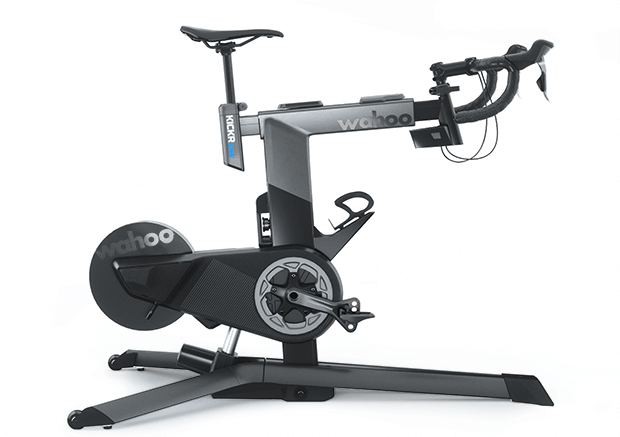
But bikes with this advanced functionality and precision were often purchased by academia, universities, or propellerhead cyclists. Peloton has broken into the home gym market with a highly functional bike, but I hope that Tacx, Stages and Wahoo didn’t simply try to jump into the market Peloton created. The Kickr Bike was a logical progression, and should’ve been made even if there never was a Peloton bike.
All these companies variously hit or miss the mark with their bikes, based on what I consider the mark, and my list of functions may include imperatives you don’t find imperative. I’m going to write about the Wahoo Kickr Bike because I think it comes the closest to satisfying my hopes for your use. It still misses some big functionality, but I’m happy it’s come as close as it has.
Let me say in advance that if I was Wahoo, reading this overview, I'd say, "Dan is writing a great review of a bike we didn't make." And they'd be right. But I have ambitions for bikes in this category, and I know those ambitions will seep into what I write below.
I haven’t ridden the Wahoo Kickr Bike. Ray over at DC Rainmaker has, so, I defer to him on everything associated with the actual ride experience. The Wahoo Kickr Bike, if you squint real hard, is vaguely similar to the GURU fit bike. It inclines, just like the GURU bike.
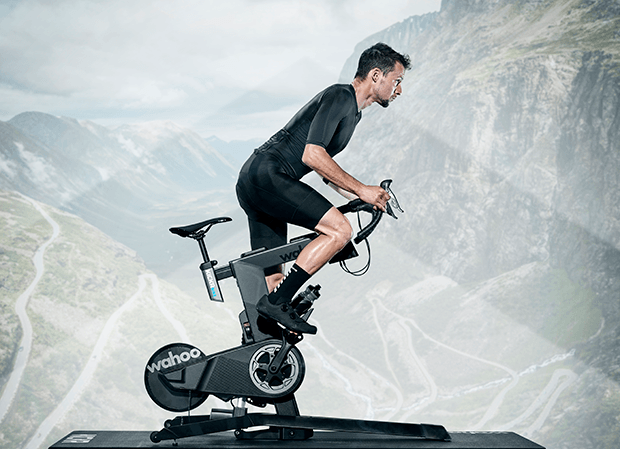
The GURU bike is a fit bike. It’s not a pain cave bike. But the need to emulate a ride up a hill is important for each use case, pain cave or fit simulator. It’s impressive that Wahoo has made a bike that inclines. One reason why a Kickr Bike will be a seller is its ability to point the rider uphill. It’s the bike for the right time because platforms are there on which to use those functions.
Imagine if all the apps were there, but the handheld phone wasn’t yet invented. Someone would build the phone to host the apps. That’s the Kickr Bike. It exists, now, to use the apps, and the apps are Zwift (primarily), The Sufferfest (which Wahoo Fitness now owns), TrainerRoad, CVRCade, Tour de Giro, FulGaz, Golden Cheetah, and on and on.
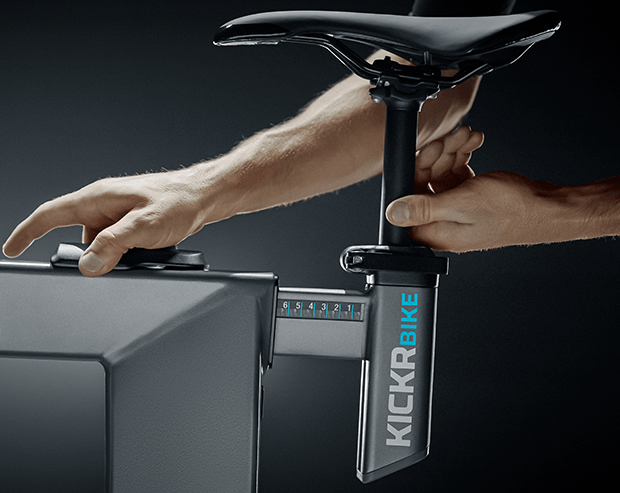
But why is the bike needed at all? Just put your bike on a smart, direct drive trainer, and off you go, for a third or a fourth the cost of this new Wahoo bike. And that’s what most people will do: just buy smart trainers. Why the fuss?
Use as a stationary bike
If you buy one of these bikes, of course, there’s less wear and tear on your “day” bike, and you don’t have to take the bike on and off the trainer. So there’s that. Second, as well as I can tell, it’s not really a third the cost if you value incline as part of the experience. When the road on a Zwift ride points up, the bike points up. Kickr Climb is a $600 spend, so a Kickr + Kickr Climb = $1,800. So the Kickr Bike isn't exactly triple the cost of a smart trainer (with incline), but it's still, at $3,500, double the cost.
Use as a bike prescriber/Position coordinate identifier
I was talking with a Wahoo executive a couple of months ago. I told him that if he really wanted to do something breakout – with the disclaimer that I’m sure Wahoo wouldn’t be interested in this – Wahoo would make a full bike, like a Peloton, but it would double as a fit bike. It must read out the proper position coordinates, chief among them HX and HY, which are the rise and run from the BB to the handlebar clamp (where the handlebar passes through the stem).
This isn’t what the Kickr Bike does, however, it does tell you how to set the Kickr Bike up based on the coordinates output by GURU, Trek Precision Fit, and Retül. This is great. I would only add that before Retül, Precision Fit or GURU there was the system that paved the way for all them all. In fact, here’s what you’ll read on the GURU system’s opening page:
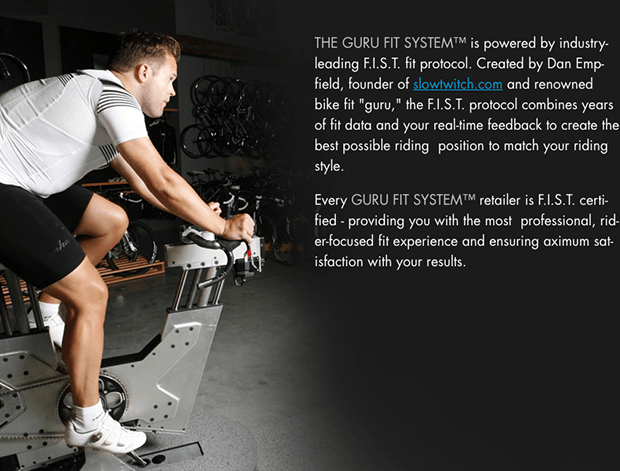
So, with respect to my friends at Wahoo Fitness, perhaps a little respect back? How about a little love for the common ancestor of all current dynamic fit systems with which you interface? Where X/Y geometry and positioning originated? And I’ll just leave that there.
Back to my discussion with the Wahoo executive: “The bike – which I’m sure you don’t want to make – should not adjust like typical home gym bikes, but should adjust in an X/Y axis – everything up and down, back and forth, horizontal and vertical.” He listened to at all and said, “You may be interested in a forthcoming launch.” The launch I'm writing about now.
Use as a position tinkering tool
I’ve long felt, and long said, that the perfect fit bike, for shop use, for bike fitters, is also a great pain cave bike, because it allows consumers to tinker with their positions. The Kickr Bike is great for this, because as explained above it normalizes for your position coordinates, and if you follow our bike fit help threads on our Reader Forum, this is what our thread curators ask for: typically Pad Y and X, or Pad Stack and Reach (same thing). But the Kickr Bike doesn’t give you this, you might reply. It gives you something that basically corresponds to HX/HY. That's good. Of course, it should have just given you HX/HY! See those numbers etched on the tubes of the Kickr Bike? It would've been very easy to simply scribe the numbers bike fitters use. That's one imperative I have for a bike like this, and Wahoo could've done this. But I digress…
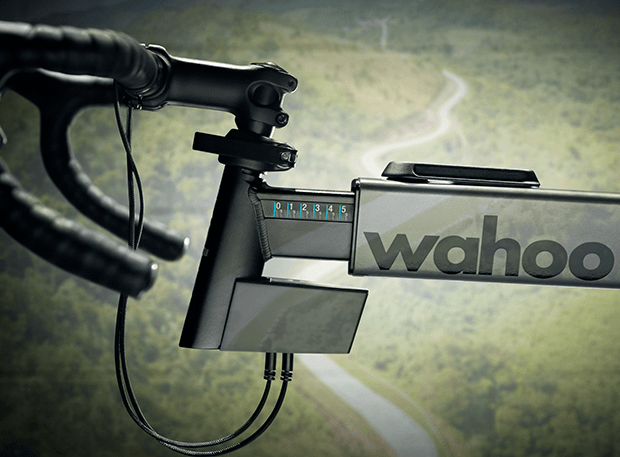
I suspect we'll generate a system that translates your Kickr Bike coordinates to a bike prescribing language our fit experts can use to tell you how to set up your outdoor bike to match your Kickr Bike metrics (or to prescribe a new bike from them).
Once we do so, and when you read the numbers off your Kickr Bike to Ian Murray, who curates the Canyon Fit Assistance thread on our forum, he’ll tell you exactly what Canyon Speedmax to order. If you give it to Eric Reid on the Cervelo fit assistance thread, he’ll tell you the precise size and configuration of the new Cervelo P-Series we wrote about a few hours ago.
If we had a bike like this 30 years ago I’d have had a much easier time designing the first tri bikes built for aero bars, and you and I would’ve both had a lot easier time figuring out how to use aerobars most effectively.
Use as a commercial fit bike
The Wahoo Fitness Kickr Bike is close, or could've been close. It adjusts with quick releases. You flip the quick release, raise and lower the saddle, or stem, move the handlebars or saddle back and forth, presto, you’re done. But this is the tech in the first fit bikes I designed back around the turn of the century. Bikes like those made by Exit Cycling adjusted in this precise way. Below is a quick release adjusting the Kickr Bike and a detail from an Exit Cycling bike made almost 20 years ago using a similar process for adjustments.
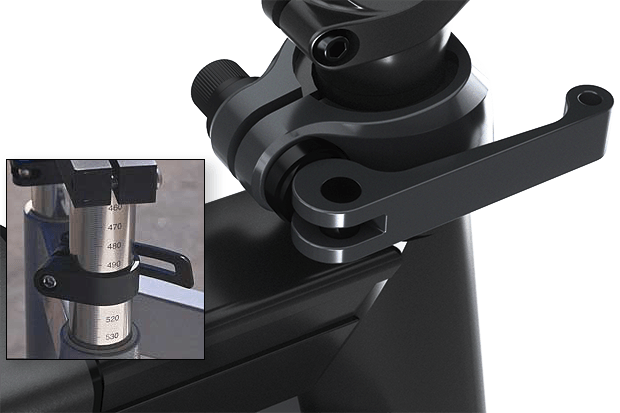
What evolved is the use of handwheels or even motors to make position adjustments, at least in commercial fit bikes. Why? Who cares? Because a proper fit process is one that grants the fitter the ability make an adjustment while the cyclist is pedaling. Shrinking the time between two adjacent positions to zero is the gold standard.
The adjustable crank on the Kickr Bike is a riff off the simplest and best adjustable crank ever made, by a clever fellow named Jeff Keller of Sunrise Cyclery. You can see the crank on the Kickr Bike, and inset is Jeff’s crank from probably 20 years ago.
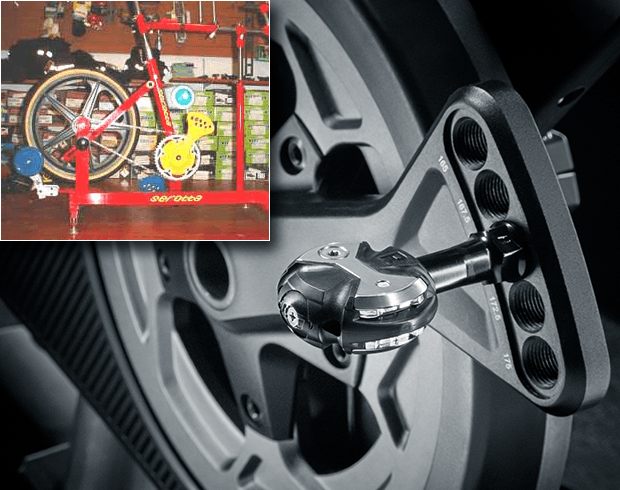
To be clear, Wahoo wasn’t making a fit bike when it made the Kickr Bike. But they’ve come darned close anyway. It's possible the only motor they could put in a bike like this was the one that inclined the bike, because GURU has patents on motors in fit bikes. GURU may still want to raise an objection, but it’s an interesting question. Countering that objection, it’s not a fit bike!
Second, Wahoo is simply incorporating the Kickr Climb’s functionality into this adjustable bike. Third, when GURU filed for that patent it didn’t contemplate the bike’s ability to incline. At some later point Dorel Corporation (owners of Cannondale) bought the IP to GURU’s fit system, and I recommended they include incline. (I build incline into every stationary bike I own; in fact here's a video of a recent incline table I built for one of my fit bikes.) GURU's current fit bike has a motor that automatically inclines and declines the bike based on command. This is why the Wahoo Kickr Bike reminds me a lot of that GURU bike. One wonders what kind of pain cave bike GURU, or its sister company Cannondale, could make based on GURU's tech.
Other bikes, like those made by Exit Cycling (today), Retul, and Purely Custom, Shimano, all adjust via handwheels or some way that allows adjustments to be made while the cyclist is riding. If the bike is made for the purpose, the rider could make those adjustments easily himself while riding.
No, I don’t think for home use, for position tinkering, it makes much difference. I suspect handwheel adjustments would've added $1000 to the price of the bike, and I doubt that was feasible. Point is, this isn’t quite the bike that fitters can use for bike fitting but, it's perfectly good for pain cave use.
All that established, once I did sketch out a fit bike that simply bolted into that roughly 2" tube that protrudes forward from a Kickr, and that sketch and the Kickr Bike are pretty close.
I would have placed different metrics on the bike. I would've placed handwheels in the bike and increased the cost, because I'd have wanted the ultimate pain cave and fit bike all in one. But my list of imperatives is not Wahoo's, and Wahoo made a bike for you, not for your bike fitter. And because Wahoo made the right bike, at the right price, with enough functionality, I say to them provisionally, "Well done." The only provision is, I haven't ridden the bike. I haven't adjusted it, to see if it adjusts in all the ways it needs to. Is the seat clamp a nightmare (they so often are on bikes like these). I haven't sniffed and tasted this bike yet, so I don't know. With those caveats, this looks like the right product at the right time.
But before I get too lathered, there are at least a half-dozen bikes in this red hot category, and I have a lot of investigating to do.


